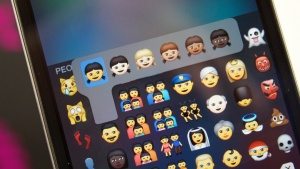What does the ‘emoji’ takeover mean for advertising?
 Emojis are everywhere. They say what we cannot always put into words and have become a sort of universal language. With a new trend comes brands lining up to dive into the fun. The world of emojis is no different.
Emojis are everywhere. They say what we cannot always put into words and have become a sort of universal language. With a new trend comes brands lining up to dive into the fun. The world of emojis is no different.
Dove, the body-care company, is one of those brands. Last year, Dove noticed that all the Unicode Consortium-approved emojis have straight hair. So, the company created its own custom keyboard to incorporate curly-haired faces into the emoji world. Download their keyboard and adjust your phone’s settings, and you are no longer confined to straight-haired emojis.
Burger King joins Dove in the emoji ranks with its chicken fries emoji keyboard, created to celebrate the return of the fan-favorite chicken fries. Ford has a keyboard of car emojis. Kim Kardashian developed her Kimoji, while stars Ariana Grande, Amber Rose, and Wiz Khalifa also released their own unique emoji keyboards. Television shows, movies, NBA basketball teams, soft drink companies, candy companies, entertainment networks, and every sort of brand in between has either released an emoji keyboard or has one in the works.
Oliver Camilo is the founder and CEO of Moji Inc., a company that creates custom keyboards. He calls custom keyboards, like the one Moji Inc. designed for rapper Wiz Khalifa, “the next thing in mobile,” and predicts, “everyone will have their own emoji.”
The emoji marketing approach is different than a series of adds or pop-ups. Developing these brand-unique emoji keyboards allows companies to put the consumers in charge. Though companies may be capitalizing on the fact that in today’s world, we spend much of our time on our phones, but they are using that screen-time to their advantage in an entirely new way. Consumers are free to download whichever brands’ keyboards they choose, but once they do, a direct connection to that brand is created and shared with every use of the emoji characters.
This emoji-centered advertising tactic could be the future of marketing, but for it to work, consumers have to want to play along. For now, the process of downloading and setting up a new emoji keyboard is somewhat time consuming and depending on the keyboard and phone interface, users may experience some difficulty. Once you’ve set up a new keyboard, you must switch between them to experience the full realm of emoji possibilities.
“At the end of the day, no one is going to have 17 keyboards on their phone,” said Jason Stein, founder and CEO of social media agency Laundry Service. “It’s a terrible experience.”

The best tip for brands looking to play off this trend is to offer their emojis as part of the conversation when that conversation is happening, according to Teddy Lynn, chief creative officer of content and social at Ogilvy & Mather. If the emojis aren’t relevant, who will want to go through the pain of setting it up?
Whether emoji keyboards are the latest in marketing techniques or just a passing fad, it may be the best chance companies have right now to reach customers who are spending nearly all their time chatting in private messages. If branded emojis are integrated into the apps consumers already use, they are very likely to catch on. For more information on the future of emojis, [Click Here]

